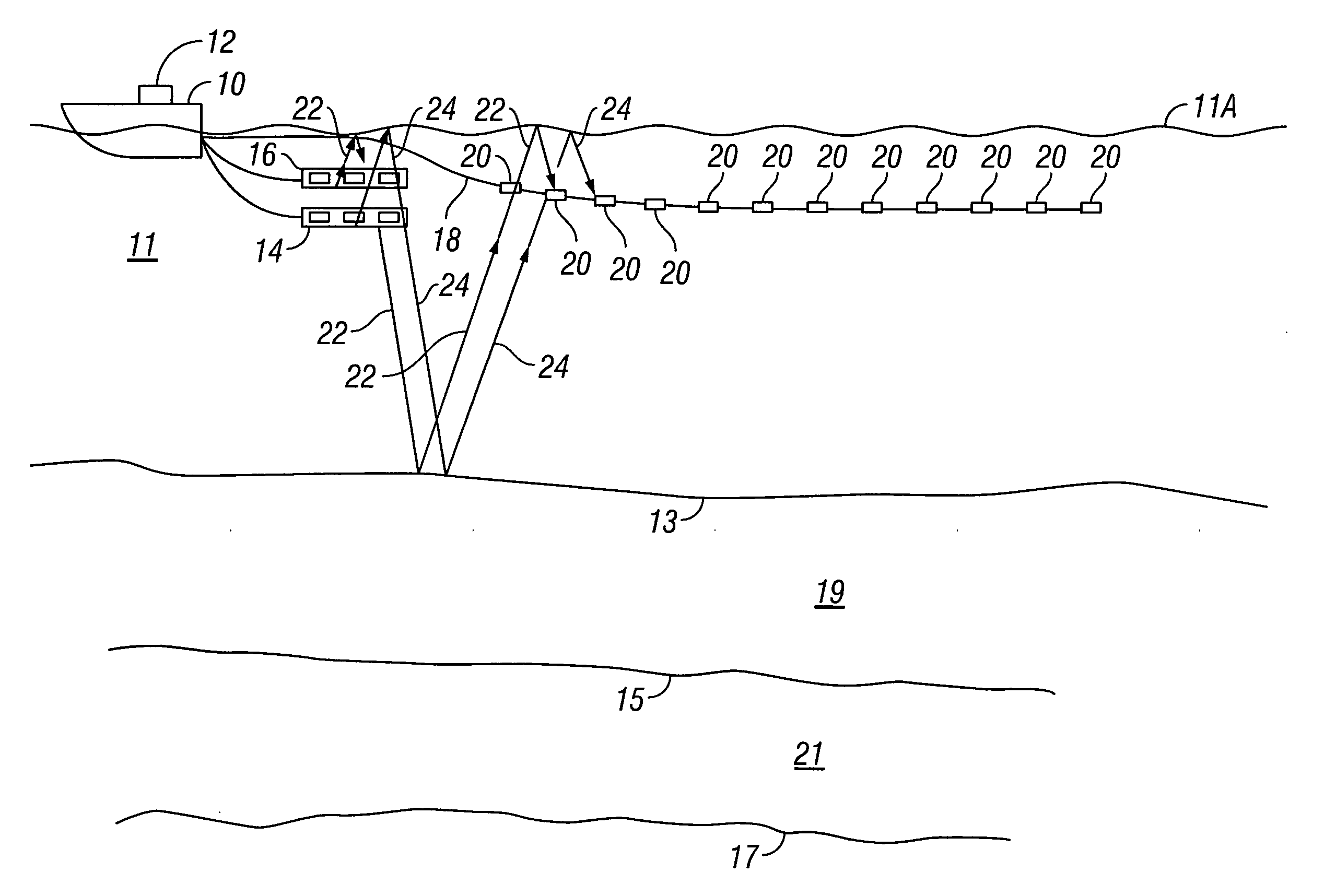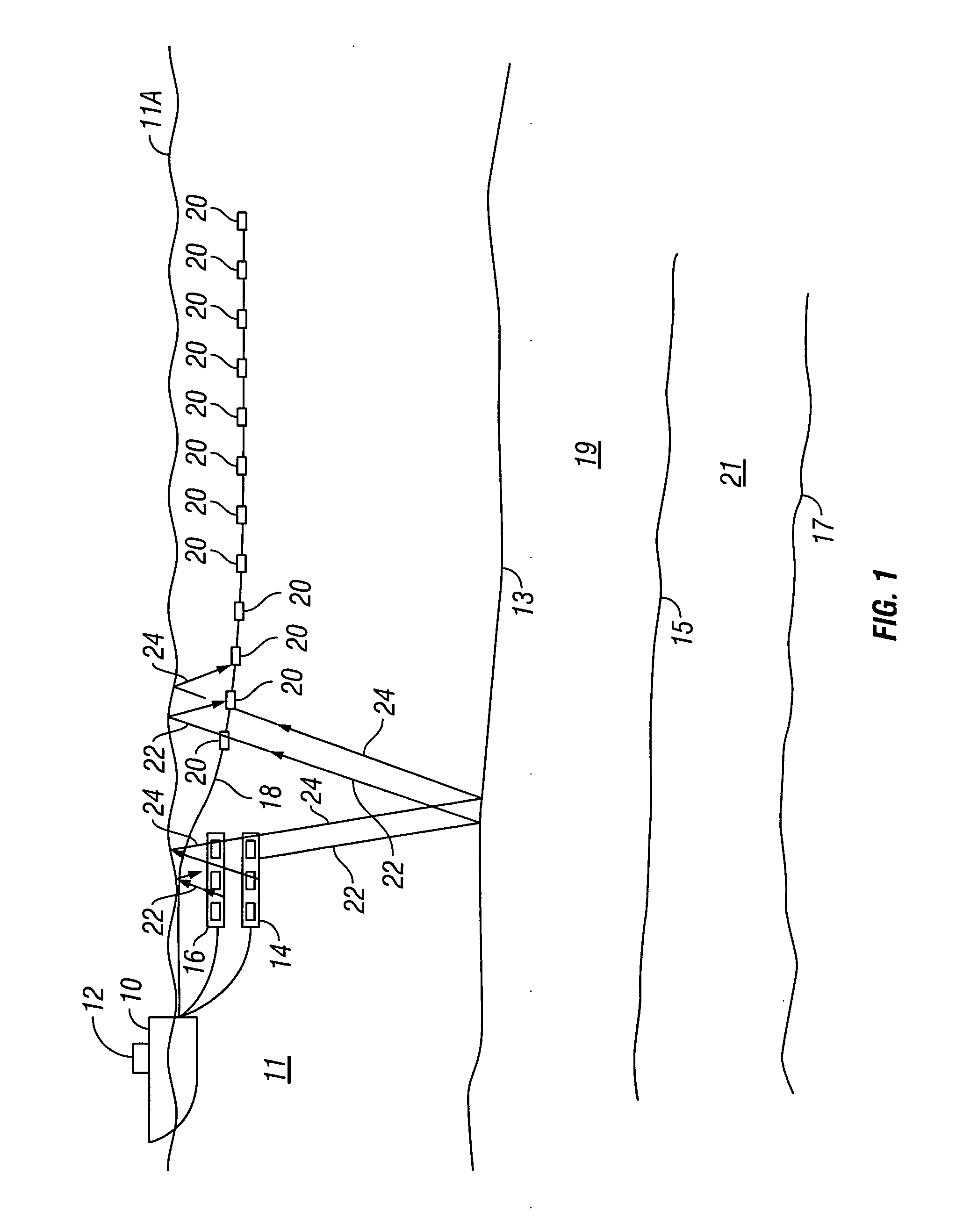Method for aquiring and processing marine seismic data to extract and constructively use the up-going and down-going wave-fields emitted by the source(s)
a technology of up-going and down-going wave fields and data acquisition, applied in direction finders, direction finders using ultrasonic/sonic/infrasonic waves, instruments, etc., can solve the problems of limiting the accuracy of inferring the structure and composition of subsurface rock formations, destructive interference in other and constructive interference in some parts of the frequency band
- Summary
- Abstract
- Description
- Claims
- Application Information
AI Technical Summary
Benefits of technology
Problems solved by technology
Method used
Image
Examples
Embodiment Construction
[0022]FIG. 1 shows in cross sectional view an example arrangement for acquiring seismic data according to the invention. A seismic survey vessel 10 moves along the surface 11A of a body of water 11 such as a lake or the ocean. The vessel 10 typically includes equipment shown generally at 12 and referred to for convenience as a “recording system.” The recording system 12 may include devices (none shown separately) for selectively actuating seismic energy sources 14, 16 (explained below), for actuating and recording the signals generated by the sensors or receivers 20 (explained below) in response to seismic energy imparted into the water 11 and thereby into rock formations 19, 21 below the water bottom 13, and for determining geodetic position of the vessel 10, the seismic energy sources 14, 16 and each of a plurality of seismic sensors or receivers 20 at any time.
[0023]The vessel 10 is shown towing two seismic energy sources 14, 16. The seismic energy sources 14, 16 can be any type ...
PUM
 Login to View More
Login to View More Abstract
Description
Claims
Application Information
 Login to View More
Login to View More - R&D
- Intellectual Property
- Life Sciences
- Materials
- Tech Scout
- Unparalleled Data Quality
- Higher Quality Content
- 60% Fewer Hallucinations
Browse by: Latest US Patents, China's latest patents, Technical Efficacy Thesaurus, Application Domain, Technology Topic, Popular Technical Reports.
© 2025 PatSnap. All rights reserved.Legal|Privacy policy|Modern Slavery Act Transparency Statement|Sitemap|About US| Contact US: help@patsnap.com



